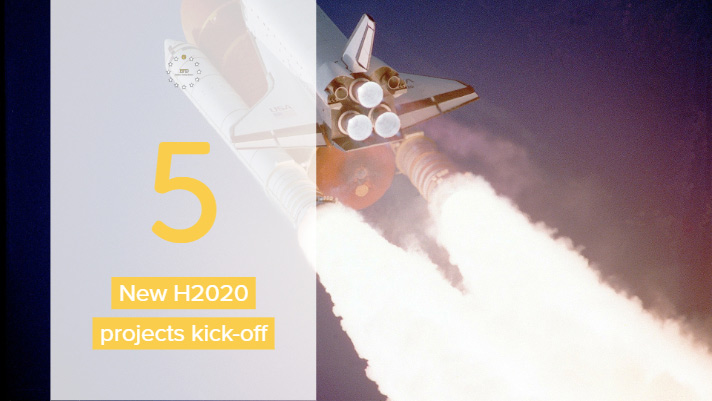
11 Mar 2019 opens with a bang: 5 new project kick off
Only 2 months from the beginning of the year and our team has already kicked off 5 new H2020 funded project: nothing better to share with you in our first blog post!
It has been a tough period: we landed in 4 different EU countries, met 106 project partners and more than 300 people... Great numbers. But the main results are our brand new projects: SINTEC, this year ICT project, has been the first to start. We waited until the end of January for the second project kick-off, APACHE project kick-off, a new project on the conservation of Cultural Heritage; the third one was GIOTTO project kick-off in Brussels where we discovered the solutions proposed by GIOTTO for osteoporotic fractures. Then, the project we coordinate, Repair3D: we organized the kick-off in Bologna (Italy) celebrating with a rock live concert because our project rocks! last, but not least, in the mid of February was the turn of NanoInformaTIX, aka NIX.
Come with us to discover better these 5 new projects.
SINTEC
SINTEC is a new European research project funded by Horizon 2020 in the ICT field, started in January 2018. Eight partners are collaborating in developing a technology for stretchable electronic patches, in fact, soon a new kind of smart patch will be released. They are made of soft stretchable circuit board technology and can measure important body functions that are wirelessly transferred to a smartphone. The researchers hope that the patches can be used in health and sports.
The smart patches are developed by a circuit board technology where small modules of common electronic components are mounted in a soft rubber material and connected with fluid alloy conductor tracks. The patches can measure important body functions and wirelessly gather the information to a smartphone with a safe, fast and streamlined transmission via the fat tissue in our body, he explains. Instead of sending signals into the air with an antenna, we aim it toward the body. This reduces the power needed for communication and the information cannot be read without coming into direct contact with the person’s skin.
Because the smart patches are soft and thin, they are more comfortable than the wireless products available on the market today and the developers hope that the patch in the future will serve as a convenient, safe and discreet support system that can be used all the time regardless of what you do, for example, skiing, having a sauna or taking a shower.
The kick off meeting of this ambitious project was held in Uppsala (Sweden) on the 16th and 17th January 2019; we are happy to announce that the European Funding Division of Warrant Hub is involved in the project with the role of Project Manager and Dissemination Manager.
APACHE
The APACHE Kick-off Meeting took place in Venice, at the Aula Magna Silvio Trentin in Cà Dolfin on the 30th and 31st of January 2019 (call identifier H2020-NMBP-ST-IND-2018, Grant Agreement n° 814496).
The project, which has 26 partners from 10 EU countries in addition to United States and Brazil, is coordinated by Piero Baglioni, Director and Full Professor of the Center for Colloid and Surface Science.
The European Union was present at the Kick-off Meeting and represented by the Project Officer, René Martins.
The objective of the project, which will have a duration of 42 months and with a EU contribution of 6.837.732€, is the development of tools/solutions for effective and affordable Preventive Conservation, especially for small and medium sized museums, galleries, deposits and libraries. The research will focus on design and realization of:
- ACTIVE Packaging and display-cases/boxes solutions, using innovative functional materials that have an active influence on, and interact with, the packed objects.
- INTELLIGENT Packaging and display-cases/boxes tools, i.e. tools that give an additional function to the packaging.
APACHE aim is to find a solution to the problem of preventive conservation and storage for the billions of objects held in museums developing a new generation of active and intelligent display cases, storage crates and archive boxes to improve exhibition, storage and transport conditions of museum collections coupled with machine learning Internet of Things software and collaborative decision-making tools for preventive maintenance.
Twelve Research centres and Departments of European Universities will be actively involved in the development of new solutions/tools, their characterization, assessment, and use for practical purposes.
Four high-tech enterprises will deal with exploitation and industrialization of newly developed solutions/tools in the field of preventive conservation of Cultural Heritage.
Six important museums and collections, Hungarian National Museum, National Museum of Slovenia, Peggy Guggenheim Collection Venice, Pompidou Centre, Fondazione Scienza e Tecnica, Italian Ministry for Cultural Heritage – Superintendency of Abruzzo SABAP will be active in promoting innovation and defining procedures and protocols for preventive conservation of cultural heritage.
There is also the International Center for the Study of the Preservation and Restoration of Cutlural Property, an intergovernmental organization working in the service of its member states to promote the conservation of all forms of cultural heritage.
The responsibility of Communication and Dissemination of the project results is in charge of Antonio Mirabile who will be supported by beWarrant.
GIOTTO
GIOTTO project kick-off meeting was held in Brussels on February 4th and 5th 2019. Representatives of the 14 partner institutions from 10 European Countries gathered together with the European Commission officer, Dr. Matteo Bonazzi, the advisory board and the Project Coordinator Prof. Chiara Vitale-Brovarone from Politecnico di Torino (Italy), to detail the plan of activities for the first year of the project.
The GIOTTO project is funded by the European Union under the Horizon 2020 research and innovation programme, call H2020-NMBP-TR-IND-2018-2020 (TRANSFORMING EUROPEAN INDUSTRY), and it will exploit the most recent materials and manufacturing technological advancements to help healthcare systems fight the consequences of this disease. Medical doctors will work together with scientists and medical device producers to develop and test new solutions based on cutting edge technologies such as 3D printing and smart nano-biomaterials. Ad hoc devices will be designed for the different types of osteoporotic fractures stimulating bone regeneration while reducing bone loss.
BeWarrant is the manager of exploitation, dissemination and communication of the project towards all groups of stakeholders, to ensure that all interested people will be aware of GIOTTO activities and results. (Find out more about GIOTTO)
REPAIR3D
The REPAIR3D Kick-off Meeting, organized by Warrant Hub S.p.A., took place in Bologna at UNAHOTELS Bologna Fair on February 13th and 14th, 2019 (Project Title: Recycling and Repurposing of Plastic Waste for Advanced 3D Printing Applications, call identifier: H2020-NMBP-ST-IND-2018, Grant Agreement: n° 814496).
The project, which has 18 partners from 6 EU countries, is coordinated by Isella Vicini, Director of the European Funding Division of Warrant Hub S.p.A.; the scientific coordination is in charge of Costas Charitidis from the National Technical University of Athens.
The European Commission was present at the Kick-off Meeting and represented by the Project Officer, Achilleas Stalios.
The objective of the project, which will have a duration of 49 months and a EU contribution of 5.998.832 €, is the development of innovative reclamation and repurposing routes for end-of-life plastic and carbon fibre reinforced polymer components. This will be achieved by employing advanced nanotechnology solutions, Additive Manufacturing and recycled resources, to produce high added value 3D printed products with advanced functionalities.
In this way, the combination of additive manufacturing, polymer processing and recycling technologies could constitute a new paradigm of a distributed recycling process, easily implemented at local scale in collaboration with the industrial sector and collection facilities, in order to create competitive, highly customisable products at lower production costs, in a flexible digital environment that fully unravels the potential of eco-design and allows for integration of smart intrinsic self-sensing, self-repairing and recycling options.
NANOINFORMATIX
The application of nanotechnology offers considerable advantages to consumer products and industrial processes in several sectors from medicine to construction, textile, transportation, information technology, energy, food safety and many more. Yet, predicting the risk posed by a product containing engineered nanomaterials (ENM) is still challenging, despite the considerable amount of data from experimental studies on their (eco-)toxicity.
NanoInformaTIX is the newly started EU-funded project focused on the creation of a web-based platform as a comprehensive, multiscale modeling framework for risk management of ENM in industrial manufacturing. The new tool will be based on the significant amounts of data on physico-chemical and toxicological and ecotoxicological properties of ENM generated over the last decades, as well as new data coming from research. The aim of the project is to provide efficient user-friendly interfaces to enhance accessibility and usability of the nanoinformatics models industry, regulators, and civil society to support the sustainable use and production of ENM.
NanoInformaTIX gathers 36 partners from 18 European Countries and 4 International Countries, counting on some of the most renowned experts in the fields of nanomaterials safety, modelling, computational chemistry, toxicology and eco-toxicology. In addition, the project will be linked to the most important initiatives and projects in the field of nano-safety and modelling, to capitalize on the critical mass of experimental data and results being produced at the European and global level.
On February 21st and 22nd 2019 the whole consortium has gathered in Madrid to kick start activities, hosted by the coordinator Prof. Miguel A. Bañares (Consejo Superior de Investigaciones Científicas – CSIC, Spain) and in the presence Project Officer of the European Commission, Carlos Eduardo Lima da Cunha.


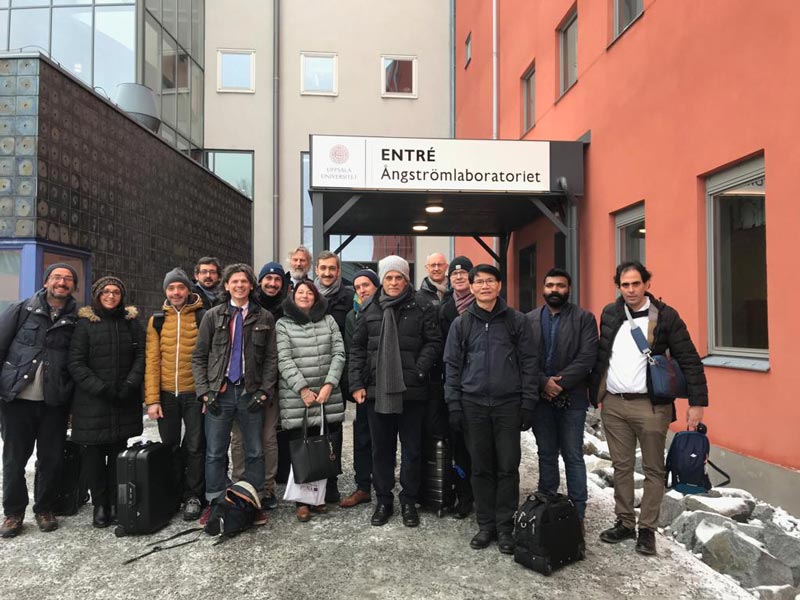
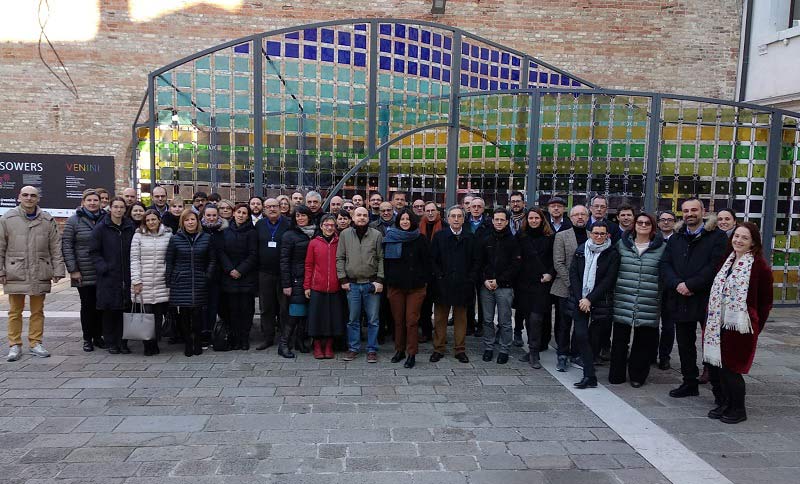
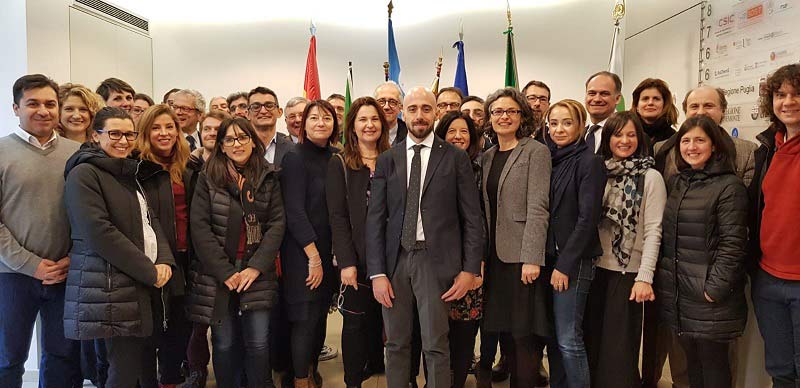
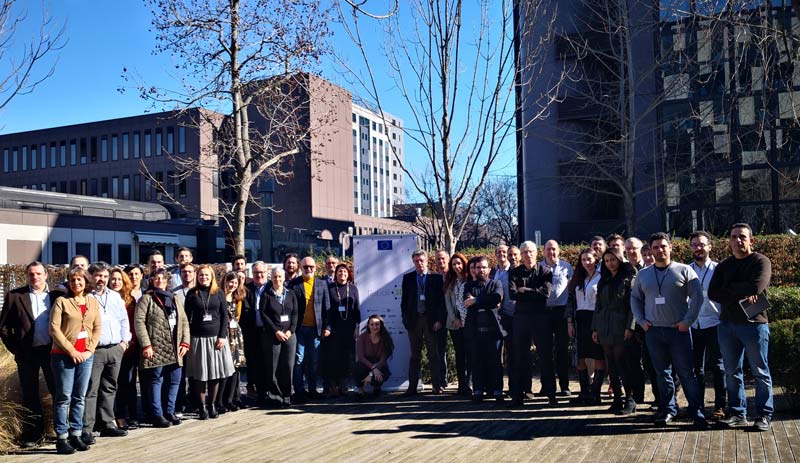
No Comments